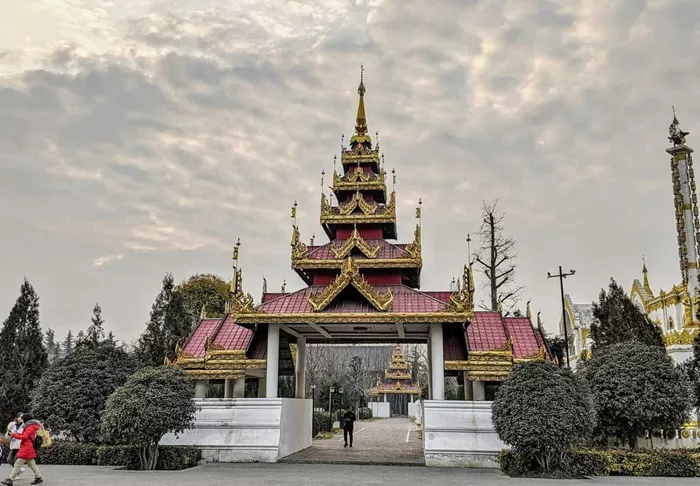White Horse Temple, located in Luoyang, China, holds a special place in Buddhist history. It is widely regarded as the first Buddhist temple built in China. This sacred place is not just a religious center but also a symbol of the profound journey Buddhism has made from India to China. In this article, we will explore the origins, significance, architectural beauty, and the impact of White Horse Temple in the development of Chinese Buddhism.
Origins of White Horse Temple
The White Horse Temple was established in 68 AD during the reign of Emperor Ming of the Eastern Han Dynasty. According to historical accounts, Emperor Ming had a dream about a golden man riding a white horse, which he interpreted as a sign to invite Buddhist teachings into China. He sent emissaries to India to seek Buddhist scriptures and monks, who arrived with the texts and images of the Buddha, bringing Buddhism to China. To honor this event, White Horse Temple was constructed in Luoyang, marking the beginning of Buddhism’s deep roots in Chinese culture.
The Significance of White Horse Temple
White Horse Temple is not just a religious site; it plays a crucial role in the history of Buddhism in China. The temple is often referred to as the “cradle of Chinese Buddhism.” It was here that Buddhist teachings were first introduced to the Chinese people. The arrival of Buddhist scriptures and monks, along with the establishment of the temple, marked the beginning of a long and influential history of Buddhism in China. The temple’s importance extends beyond religious practices, as it also served as a cultural and intellectual center that contributed to the development of Chinese Buddhism.
White Horse Temple and the Spread of Buddhism in China
White Horse Temple served as the first place where Buddhist monks and scholars gathered to translate Buddhist texts from Sanskrit into Chinese. This was a significant step in making Buddhist teachings accessible to the Chinese population. Over time, White Horse Temple became a hub for Buddhist learning and influenced the growth of various schools of thought, including Chan Buddhism, Pure Land Buddhism, and other sects that would shape the future of Chinese Buddhism.
The Architecture of White Horse Temple
One of the most striking features of White Horse Temple is its traditional buddhist architecture. The temple’s layout follows a classic Chinese temple design, with halls, pagodas, and courtyards. The temple complex is set against the backdrop of the beautiful Luoyang hills, enhancing the serene atmosphere of the site. The architecture incorporates elements of both Chinese and Indian influences, symbolizing the fusion of Buddhist culture from its place of origin with Chinese traditions.
Key Features of White Horse Temple Architecture
White Horse Temple consists of several important structures, each with its own significance:
- The Main Hall (Daxiongbaodian): This hall is dedicated to the Three Buddhas: Sakyamuni, Amitabha, and Medicine Buddha. It is the focal point of the temple, where prayers and ceremonies are held.
- The Scripture Hall: This hall houses many ancient Buddhist texts and scriptures that were translated into Chinese. It also serves as a library for Buddhist scholars.
- The Pagoda: The pagoda at White Horse Temple is an iconic feature, symbolizing the presence of the Buddha. The pagoda serves as a reminder of the temple’s origins and its ongoing role in preserving Buddhist teachings.
The Influence of Temple Architecture on Chinese Buddhist Temples
White Horse Temple’s architecture has had a significant influence on the design of other famous Buddhist temples in China. The temple’s structure and layout became a model for subsequent temples, especially in the development of Buddhist architecture throughout China. Many Chinese temples adopted similar features, such as the multi-tiered pagodas, symmetrical halls, and the integration of Buddhist iconography into the architecture.
Role of White Horse Temple in Buddhist Culture
Over the centuries, White Horse Temple has remained an essential center for Buddhist practice and culture in China. It has played a key role in the transmission of Buddhist teachings and has been a place for monks to study, meditate, and engage in ritualistic practices. The temple also serves as a spiritual sanctuary for laypeople, who visit to pray, meditate, and seek blessings.
White Horse Temple Today
Today, White Horse Temple continues to attract visitors from all over the world. It is not only a place of religious worship but also a popular tourist destination. Many visitors come to learn about the rich history of Buddhism in China, admire the temple’s temple architecture, and experience the serene atmosphere that has been preserved for over 2,000 years.
Buddhism and Its Global Influence
White Horse Temple’s legacy extends far beyond its role as a religious center in China. The temple represents the ongoing influence of Buddhism on the world. Buddhism, which originated in India, has become a global religion with millions of followers. The journey of Buddhism through White Horse Temple serves as a symbol of how religion and culture can transcend borders and influence different societies. It highlights the importance of places like White Horse Temple in the spread of religious ideas and cultural exchange.
Conclusion
White Horse Temple stands as a testament to the enduring influence of Buddhism in China. Its historical significance, architectural beauty, and cultural role make it a crucial site for anyone interested in the development of Buddhism. As the first Buddhist temple in China, it has laid the foundation for the spread of Buddhist teachings and continues to inspire spiritual seekers and tourists alike. Whether you are visiting to study Buddhist culture or simply to admire its temple architecture, White Horse Temple remains a powerful symbol of the fusion of ancient traditions and modern beliefs.

